




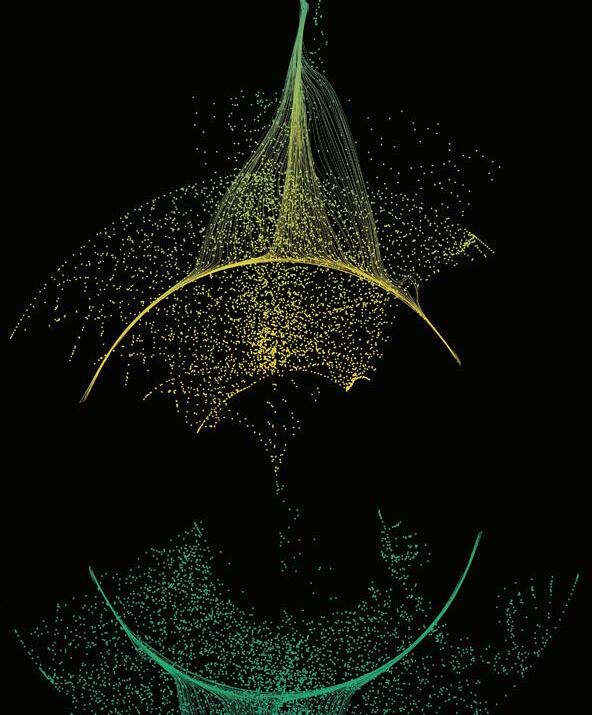









EPCC’s new national role builds upon 35 years of excellence






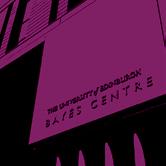


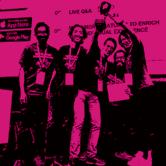





This summer has seen two important announcements from the Government which will impact EPCC for many years.
The confirmation of £750m funding for the next National Supercomputer service is extremely welcome. Although the delay in the project has repercussions, it does mean that we are likely to be able to take advantage of the next generation of processor technologies. We hope to deploy the new system by mid-2027 and the procurement process has now started.

Shortly afterwards, the Government also announced that EPCC has been selected to be the UK’s first National Supercomputing Centre. This is a very welcome recognition of all of our efforts over the past 35 years. In discussion with the Government, we are still understanding how this new status will impact our activities, but a key aspect will be strengthening our engagement with the academic and industrial computational science communities in the UK and internationally and, linked to that, showing greater leadership worldwide.
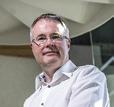
In many ways this second announcement was more important than that of the next National Supercomputer. Our new status will profoundly influence EPCC’s development over the next decade and we are very grateful that the Government has put their trust in us.
I hope you enjoy this issue of EPCC News.
Mark Parsons EPCC Director
m.parsons@epcc.ed.ac.uk
Come along to booth 2832 to find out the latest developments at the UK’s first National Supercomputing Centre!
You can also read about our SC activities on our website:
www.epcc.ed.ac.uk/whats-happening/ events/sc25

www.epcc.ed.ac.uk info@epcc.ed.ac.uk
EPCC

In July the UK Government recognised EPCC as a centre of supercomputing excellence by designating it as the UK’s first National Supercomputing Centre in the UK Compute Roadmap.
Developing the expertise, experience and track record required to be recognised in this manner has not come overnight.
EPCC was established thirty-five years ago, in September 1990, when the Edinburgh Parallel Computing Centre was inaugurated as a technology transfer centre. Initially funded by the UK Government’s Department of Trade & Industry (DTI), the mission was to accelerate the impact of parallel computing across industry and academia.
When this funding came to an end two groups of staff spun out the companies Paramics and Quadstone, while those who remained successfully bid to host the Cray T3D National HPC Service, and the first of what became a series of large European Commission projects - the HPCNTTN project.
By the late 1990s the focus of the Centre, now known as EPCC, was business-oriented and entrepreneurial, with a commitment to delivering both scientific and industrial projects on time and to budget.
In the early 2000s EPCC launched its first MSc programme, while continuing to deliver a wide variety of training. We are now a leading provider of HPC and data science education in Europe.
In 2004 the Advanced Computing Facility, our research-focused data centre, was established. It has hosted the series of UK National Supercomputing Services from HECToR through to ARCHER and currently ARCHER2, and will host the next National Supercomputer service.
The growth of data science and artificial intelligence in the mid2010s saw the Centre contribute to the creation of the Edinburgh and South East Scotland City Region Deal’s Data Driven Innovation initiative. This led to the Edinburgh International Data Facility (EIDF), a regional cloud research environment designed to meet the growing needs of regional innovation and research. Operated by EPCC, EIDF hosts Europe’s largest research deployment of the Cerebras CS-3 Wafer-Scale Engine AI supercomputers, and a Regional GPU Cluster.
EPCC now has around 150 staff supporting our work with industry and academia, and in teaching our 160 MSc and PhD students. We operate a range of systems and services, with a wide spread of national and international partnerships with academia and industry, and these are growing in a number of new directions.
As we finalise the plans for the UK’s next National Supercomputer service, we look forward to our new partnership with the UK Government’s Department for Science, Innovation and Technology (DSIT), and UK Research and Innovation (UKRI), to continue to deliver our mission: to accelerate the effective exploitation of novel computing throughout industry, academia and commerce.
Ritchie Somerville EPCC Deputy Director r.somerville@epcc.ed.ac.uk
EPCC’s focus has always been on delivering science, powering the businesses we work with, enabling innovation, fostering knowledge and developing talent. To have our track record and global standing recognised with this designation as the UK’s first National Supercomputing Centre is a credit to all the people who have worked at EPCC, all the partners we have worked with so far, and the culture they have helped EPCC create and foster.

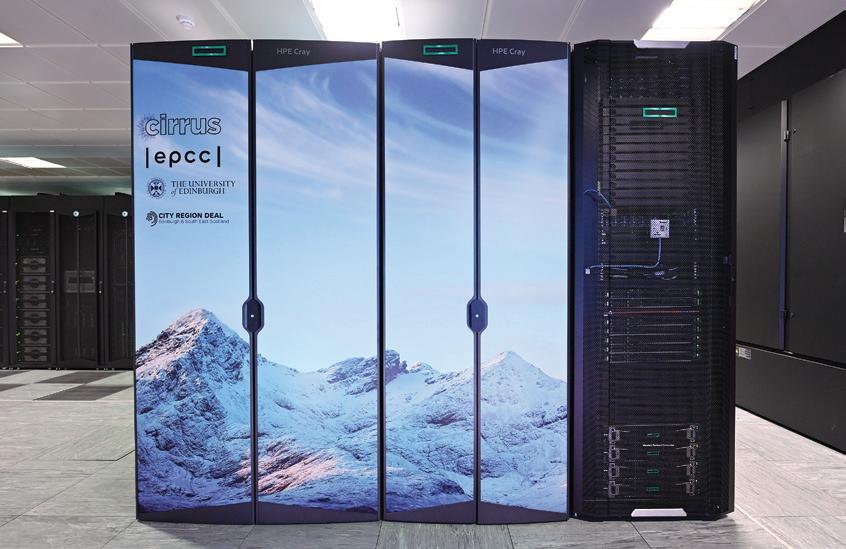
For the past nine years, the Cirrus service at EPCC has offered flexible HPC resources for academia and industry. The latest hardware refresh of Cirrus will provide new resources for CPU-based HPC use and increase the flexibility of the service. Cirrus will also continue to be one of the UKRI Tier-2 National HPC Services available to researchers across all research domains funded by UKRI.
The core of the updated Cirrus service will be provided by an HPE Cray EX4000 system with over 70,000 CPU cores connected by the high-performance Slingshot 11 interconnect. Core compilers and computational libraries will be available through the HPE Cray Programming Environment, with a range of research software installed on top by EPCC. Users will be provided with in-depth technical support by EPCC experts.
The new Cirrus hardware is expected to be available before the end of 2025.
The Cirrus service has always provided flexibility to meet a wide variety of use cases – from parallel applications using thousands of cores concurrently to workloads that have large memory requirements. The updated Cirrus service will evolve this flexible approach – in addition to supporting different workflow types, it will also offer more ways to interact with Cirrus.
The back-end compute nodes will have access to the external internet
to allow users to access datasets hosted elsewhere directly from running jobs. Cirrus will also provide new ways to launch work on the service on top of the traditional SSH access: web-based access will be provided by Open OnDemand and there will be support for users wishing to run persistent services that can access Cirrus compute nodes.
As part of the integration with the Edinburgh International Data Facility (EIDF), we are also working towards enabling sharing data with EIDF virtual machines (VMs) and
running work on Cirrus directly from EIDF VMs. These new functionalities will allow Cirrus to be used effectively for a greater range of research and development.
Having the right support in place is critical to users gaining maximum benefit from Cirrus. The service is backed by EPCC’s decades of expertise in running and supporting successful HPC services, and the Cirrus service desk has access to more than 80 EPCC technical experts. This allows the service desk to help users with problems ranging from porting and optimising complex research software to integrating Cirrus into existing workflows. For organisations with more in-depth requirements that require working directly with EPCC technical experts, we offer consultancy and collaboration for both short-term and long-term projects. Cirrus is also supported by comprehensive documentation, allowing users to start using the service quickly.
Cirrus has always provided different access routes to meet the requirements of commercial and academic organisations, and this will continue on the updated service.
Commercial access. There will be opportunities to try Cirrus free of charge, pay per use, or arrange access that includes dedicated consultancy from EPCC to allow your company to make best use of the service. To explore these options, contact our Commercial manager, Julien Sindt: commercial@epcc.ed.ac.uk
Academic access. Quick, free access options, as well as routes for accessing larger amounts of resource over longer timescales, will be available. Pump Priming (replacing the current Instant Access route) will provide free, quick access to a small amount of resource to allow research groups to assess use of the service. The Cirrus Driving Test will give individual researchers access to Cirrus to improve their understanding of HPC. For larger amounts of resource, academics can apply to UKRI Access to HPC calls (typically open two or three times per year) and add Cirrus access to research grant applications.
The updated core Cirrus hardware will be provided by an HPE EX4000 supercomputing system with 256 compute nodes. Each compute node will have 288 cores (dual AMD EPYC 9825 144-core 2.2 GHz processors) giving a total of 73,228 cores. There will be 192 standard memory nodes and 64 high memory nodes. Compute nodes will be interconnected by an HPE Slingshot 11 interconnect. Storage will be provided by existing EIDF file systems: Lustre for the “work” high performance parallel file system and CephFS for the “home” file system.
SSH login access will be provided by dedicated login nodes integrated within the EX4000 HPC system with more flexible access resources provided by virtual machines (VMs) hosted within the EIDF virtual desktop service.
The updated Cirrus system will run the HPE Cray Linux Environment (CLE) with the base software stack provided by the HPE Cray Programming Environment (CPE). The CPE provides software though a standard module framework (Lmod) and includes different compiler environments (GCC, Cray, AMD), parallel libraries (MPI, OpenMP, SHMEM), standard numerical and IO libraries (BLAS/ LAPACK/ScaLAPACK, FFTW, HDF5, NetCDF), parallel Python and R environments and parallel profiling and debugging tools. Containers will also be supported via the Apptainer or SingularityCE software. On top of this base software environment, EPCC will install and maintain a suite of common research software for the Cirrus user community to enable users to access Cirrus as quickly as possible.
Andrew Turner, EPCC a.turner@epcc.ed.ac.uk
Further information Cirrus website: www.cirrus.ac.uk
Cirrus Service Desk: support@cirrus.ac.uk
The Edinburgh International Data Facility (EIDF) continually pushes the boundaries of data-intensive research. It isn’t just building a future - it offers you a pivotal role in shaping its direction.
At EIDF we provide far more than massive storage options and conventional computational power, we offer groundbreaking technologies such as the EIDF Cerebras Service. A revolutionary force within the AI and big data realms, our Cerebras CS-3 WaferScale Cluster delivers unprecedented computational speed and efficiency. Delve deeper into these capabilities through our special focus events and prepare to manage data like never before.
EIDF drop-ins: paving the way for continuous innovation
Since our inaugural drop-in session in July, EIDF has spearheaded a series of interactive engagements. Forget mundane seminars; our sessions are vibrant, featuring leading minds in data science who have transformed their fields using our resources. Each thematic event offers a fresh perspective, ensuring that whether you’re a first-time visitor or a regular, there’s always something new to discover.
Ready to solve real problems?
EIDF is building a community where data scientists and research analysts worldwide can collaborate to tackle real-world challenges. Whether it’s analysing complex genetic data or optimising urban infrastructure through analytics, your questions inspire our innovations.
Join us for:
• Cerebras deep dive sessions. Regular explorations into how wafer-scale computing can revolutionise your research.
• Networking opportunities. Connect with industry leaders, distinguished academics and fellow innovators who are eager to collaborate and exchange ideas.
• EIDF Drop-ins. Discover our innovative tools and platforms, listen to engaging talks, and bring your pressing questions to discuss directly with our service managers.
Get involved: shape the future of data-driven research
Subscribe to our new bulletin, attend our next event, or just drop us an email to learn how EIDF is a powerhouse that’s driving the future of data science. Your research questions will not only find answers here – they’ll find practical, innovative and collaborative solutions that are shaping the future of technology and data handling. EIDF is more than just a facility; it’s where your next big discovery turns from possibility to reality.
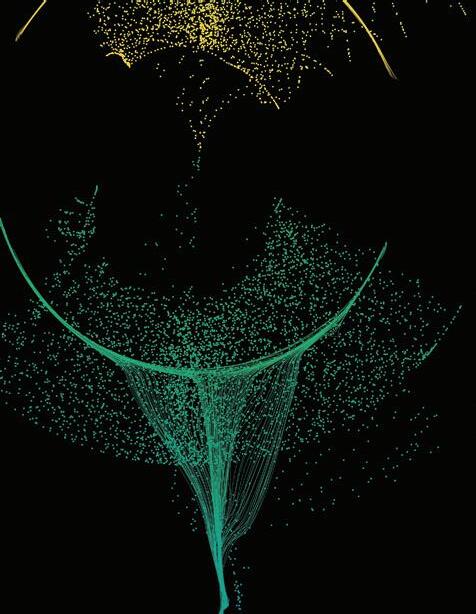
Magdalena Drafi-McHugh, EPCC m.drafi-mchugh@epcc.ed.ac.uk
Join us at EIDF – where data meets discovery: https://edinburgh-internationaldata-facility.ed.ac.uk/
Staying informed about the latest research and approaches to delivering HPC services and systems is essential to keeping EPCC at the forefront of large-scale computational innovation.
One way that we do this is through participation in events that bring together the international HPC community. These include the annual Supercomputing Conference in the US, and the International Supercomputing Conference in Germany (each attended by over 15 colleagues). We are also actively engaged in smaller, high-quality, research focused conferences where new HPC innovations are showcased. An example is IEEE Cluster, which we hosted in Edinburgh this September.
Alongside conferences and events, EPCC also has a number of international collaborations. Working with our peers around the globe to exchange knowledge, skills, and staff and students, helps ensure we have access to the latest research, technologies, and technical approaches. One example is our long standing collaboration with the Centre for Computational Sciences at Tsukuba University, Japan, that has included annual collaboration workshops and joint research activities for over fifteen years.
We also have a current international collaboration project, CONTINENTS (funded by EPSRC), with the National Centre for Atmospheric Research (NCAR) in the US, and the National Centre for Atmospheric Sciences (NCAS) in the UK. This activity is focused on the specific research challenges associated with climate and weather science simulations, particularly how to make them more efficient and sustainable. It is an example of a tightly coupled collaboration where staff and student exchanges, and shared research activities, are contributing towards knowledge sharing and innovative sustainability solutions.
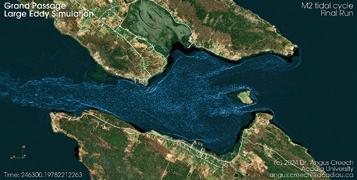

Through European funding programmes, we have a history of more than twenty years of collaborating strongly with our peer centres in Europe. This has included many projects and partners, including collaborations on I/O with organisations such as the European Centre for MediumRange Weather Forecasts (ECWMF), industry HPC projects with the High-Performance Computing Center Stuttgart (HLRS), architecture research with FZ Jülich, and fusion research with IPP Garching and Chalmers University.
Finally, EPCC has been collaborating on training and education globally since 1993, from the European TRACS project through to HPC-Europa, enabling exchanges between European researchers. Alongside this, with activities such as the PRACE pan-European HPC network, and
advanced training and summer school events over the past 20 years, we have long been a collaborative and outwards facing organisation.
Currently we are starting to build international collaborations with new partners, including with Canadian and South Korean research organisations, and look forward to expanding our partnerships and co-operation with similar researchers and research organisations around the world.
Adrian Jackson, EPCC a.jackson@epcc.ed.ac.uk

Research at EPCC: www.epcc.ed.ac.uk/research
On 23rd June 2025 the world had its first glimpse of the capability of the Vera C. Rubin Observatory, a new astronomy facility in Cerro Pachón, Northern Chile, which houses the 8.4m Simonyi telescope and is equipped with the world’s largest digital camera, the 3.2-Gigapixel LSST Camera. Several images were published which showcased the beauty of the cosmos and created much excitement in the astronomy community due to their unprecedented detail and scale.

Over the next 10 years, the Simonyi telescope will image the Southern sky repeatedly every few nights to create an ultra-sensitive, ultra-highdefinition survey – the Legacy Survey of Space and Time (LSST). As well as producing incredibly high-fidelity images, the LSST survey will illuminate the dynamic nature of the cosmos. By comparing repeat observations of each patch of sky, LSST will catalogue the changes happening all the time, from finding exploding stars (supernovae) in the distant universe to tracking millions of objects in our solar system. Each night, the telescope is expected to identify and alert on around ten million ‘events’ for astronomers to study and classify.
The LSST is as much a computational challenge as it is an engineering challenge. Over the operational lifetime, this digital survey will grow to around 200 petabytes of images, measurements and observations, which are set to transform our understanding of the Universe. This
data is not only incredibly large, but it is also extremely complex, requiring national-scale digital research infrastructure and the latest data mining and machinelearning technologies to properly interrogate it.
To meet these demands, an international Rubin Data Management team has been formed: to process telescope observations into science-ready products; to deliver these products to the astronomy community; and to create the services and software to enable full exploitation of this unique resource.
The UK – leveraging EPCC’s track record in data-intensive research – is a leading contributor to LSST’s computing challenge. In collaboration with the University of Edinburgh’s Wide-Field Astronomy Unit, and research software engineers in Lancaster University and Rutherford Appleton Laboratory, EPCC is helping build the Rubin UK Data Facility (one of
three national facilities; others are in the USA and France) which will process, measure and validate around 20 petabytes of data per year, and then publish them to twelve Rubin Data Access Centres (DACs) around the world, through which astronomers will be able to study and probe the survey.

The UK Data Access Centre is hosted at EPCC’s Advanced Computing Facility on the Somerville research cloud. Jointly funded by LSST:UK and the STFC IRIS programme, Somerville has been designed to give UK researchers the capability they need to handle next-generation survey astronomy. Being co-located with world-class facilities like the ARCHER2 National HPC Service and the Edinburgh International Data Facility enables astronomers to harness bleeding-edge AI and HPC capacity for their research.
The EPCC-based team has been preparing for LSST for more than 10 years, tackling a huge range of


challenges from how to ingest and catalogue multi-petabyte datasets, how to facilitate access to HPC and AI technologies to support astronomy workflows, and how to make user interfaces both accessible and powerful in this new data-intensive age.
The coming year will be an incredibly memorable one for EPCC. We expect to receive the first operation Rubin data imminently and will be hosting our first large-scale astronomy projects. We can only anticipate a little of what LSSTCam will discover but can be sure it will transform our understanding of the Universe and our place in it.
George Beckett, EPCC g.beckett@epcc.ed.ac.uk


Images above show the Vera C. Rubin Observatory and the Somerville data intensive storage service for astronomy.
Image credits (left to right clockwise):
RubinObs/NOIRLab/SLAC/DOE/NSF/AURA/W.
O’Mullane
RubinObs/NOIRLab/SLAC/NSF/DOE/AURA
RubinObs/NOIRLab/SLAC/NSF/DOE/AURA
NSF–DOE Vera C. Rubin Observatory Somerville by Jordan Bell, EPCC.
The Vera C. Rubin Observatory is named after the American astronomer whose work provided convincing evidence for the existence of unseen “dark” matter in the Universe. Prior to Dr Rubin’s work, the concept of dark matter was not taken seriously; her observations influenced the whole scientific community and the way we explore the cosmos.
Links: https://rubinobservatory.org
https://rubinobservatory.org/ gallery/collections/first-lookgallery
https://www.lsst.ac.uk
https://www.epcc.ed.ac.uk/ hpc-services/somerville https://www.iris.ac.uk


One of the fundamental questions around quantum computing is how to integrate this new computational architecture into traditional high-performance computing (HPC). This is a challenge for both hardware and software, but let us consider the more restricted question: how to program a quantum-accelerated HPC system.
Programming accelerated systems is not a new problem. In 1982 EPCC’s predecessor had six Distributed Array Processors (DAPs) installed in its ICL mainframe. Each DAP had a 64x64 grid of single bit processing elements, each with 4 kibibyte of memory and could be programmed with an extension to the FORTRAN programming language. There are, in my opinion, two important lessons we can take from the DAPs (or perhaps from the world of GPU computing, if we want a more recent example).
First, papers from the time note that DAP was wonderfully fast, but with a considerable overhead of time spent transferring data to and from it. The same problem occurs with modern accelerators such as GPUs, hence the recent move to bring CPU and GPU closer together. The real lesson here is that data movement always takes time.
Second, the DAPs were relatively easy to program from an HPC perspective because they adapted a tool familiar to HPC users: FORTRAN. Even today the majority of programs run on ARCHER2 are written in Fortran, though we have seen a move towards C++ and even Python in GPU-accelerated systems.
So, the two takeaways for quantum are: we should try to keep the transfer time between classical computer and quantum computer as short as possible, and we should come up with programming models familiar to HPC software engineers.
With these targets in mind, the quantum team at EPCC is developing CQ, a C-like API for quantum computing. CQ is primarily a specification, but we have also written CQ-SimBE, a C99 implementation of CQ written on top of a simulated quantum computer (courtesy of QuEST). CQ provides C-like semantics for handling both quantum and classical data, and C-style functions for defining quantum circuits. Crucially, CQ is designed to be implementable entirely as a runtime library, meaning it can be introduced to an existing codebase without changes to that code’s compiler toolchain.
At the software level, we can’t do much about the offloading latency of quantum kernels. What we can do is give the programmer control of when exactly communication between the classical host and the quantum accelerator takes place. CQ uses an MPI-inspired, nonblocking offload to allow the programmer to send the quantum kernel over as soon as possible, and only sit and wait for results once they’re necessary.
CQ and CQ-SimBE are still works in progress, but so far we have implemented CQ-SimBE in shared memory, using POSIX threads to separate the ‘host’ and ‘device’. We have blocking and non-blocking offload, and support for single or multiple shots on the simulated device. Perhaps most excitingly, we have experimental support for analogue quantum computing as well as digital, and even the
beginnings of a Fortran interface!
To fully implement the CQ specification, we still need to add support for multiple devices, and parameterised quantum kernels. We also want to introduce MPI to CQ-SimBE, to create a cleaner separation between host and device, as well as allow us to simulate larger classical and quantum systems.
Our work on CQ is funded by the QCi3 National Quantum Technology Hub, and we plan to implement CQ on top of one of the quantum computing platforms available within the hub. With that we hope to demonstrate the benefits of tightly coupled quantum and HPC, and explore some of the use cases that might be possible with incremental inclusion of quantum computation in classical HPC.
Importantly, this is just one approach of very many for programming hybrid quantum and HPC and at this stage, where so much is uncertain about quantum computing hardware, it’s important to have a variety of options for users.
Oliver Brown, EPCC o.brown@epcc.ed.ac.uk


assumed by CQ; a quantum device consists of quantum hardware and an integrated classical coprocessor. Classical data can be transferred between host and device.
EPCC is exploring how quantum computing will impact HPC and data science. We collaborate directly with quantum computing experts across the UK through these organisations:
Quantum Computing Application Cluster. A multi-disciplinary collaboration between the Universities of Edinburgh, Glasgow, and Strathclyde that is working to accelerate the development of quantum computing technologies in Scotland.
Quantum Software Lab.
A dedicated Quantum Software Lab at the University of Edinburgh that works alongside the National Quantum Computing Centre to identify, develop, and validate realworld use cases for quantum computing.
Research at EPCC: www.epcc.ed.ac.uk/research


Preprint ‘Introducing CQ: A C-like API for Quantum Accelerated HPC’: arxiv.org/abs/2508.10854
CQ: github.com/EPCCed/cq-spec QuEST: github.com/QuEST-Kit/QuEST
and distinct quantum and classical communication networks.

Following many years of collaborating with the National Collection of Aerial Photography, EPCC has been chosen as the hosting site for the research copy of its historic dataset of over 30 million aerial photographs.
The National Collection of Aerial Photography (NCAP), part of Historic Environment Scotland, is the custodian of one of the world’s most notable datasets. It holds over 30 million aerial photographs of locations throughout the world and dates from the 1920s to the early 21st Century. These photographs have many provenances: most are declassified military reconnaissance sorties, whilst others are from surveys undertaken by now-defunct private companies.

Most of these images are stored as physical copies – either as photographic prints or on largeformat film. NCAP is in the process of digitising each image to ensure they will remain available to future generations. When NCAP started this work, each print and each frame of film was scanned by hand by a technician. Since NCAP has evolved to automate as much of the digitisation process as possible, it has moved from being able to scan 100-200 images per day to scanning many thousands of images per day, reducing the expected time to digitise from centuries to much more manageable decades.
NCAP’s success with automating digitisation has led to an unforeseen problem: NCAP is producing more data than can be easily stored. Each scanned image is about 0.3-1.2 GB in size (roughly the same as a standard-definition movie). Once all 30 million images are digitised, NCAP will require in the region of 15 petabytes (15,000

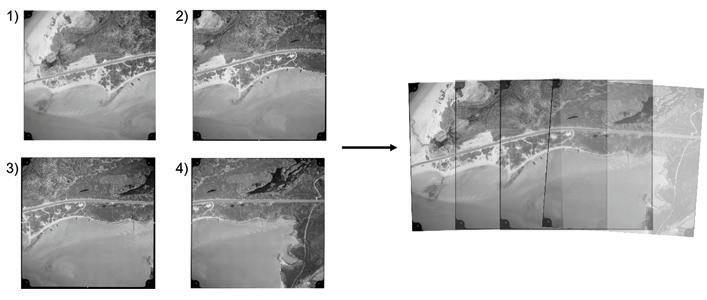
terabytes) of storage! NCAP already has mechanisms in place for storing this data for posterity but, realising the value of its datasets to the research community, wants a copy of the data to be accessible to researchers.
This is where EPCC comes in. As hosts of the Edinburgh International Data Facility (EIDF), we can provide NCAP with the petabytes of data storage it requires. EIDF is a world-class private cloud infrastructure that has been developed to facilitate data science research. Users can access tens of petabytes of storage in a variety of flavours – whether you’re looking for locally-hosted S3 buckets securely hosted within the UK or backed-up resilient storage, EIDF can provide you with the resources you require. Additionally, EIDF is designed to ensure you can access both the traditional and AI compute necessary to extract valuable insights from rich datasets like NCAP’s.
NCAP and EPCC have together developed a framework to enable researchers to make use of the NCAP dataset for research projects. Academics can leverage access to these datasets when proposing projects, thereby ensuring the NCAP collections are actively used
to provide information of societal value.
Some of the NCAP datasets, such as the “Joint Air Reconnaissance Intelligence Centre” (JARIC) dataset, contain aerial photographic images from across the globe that were taken in a regular, periodic pattern over 50 years from the 1940s. Each sortie was shot so that all of its photographs could be used to create a mosaic, showing a single image of large swathes of land.
The JARIC dataset, for instance, contains regular surveys of large parts of Africa, East Asia, and the islands of the Caribbean Sea, Atlantic and Pacific Oceans. By itself, this can be used to provide a significantly higher resolution version of Google Maps for much of the world dating back to the 1940s (before satellites were flying, let alone collecting Earth Observation data), and with the photography of locations being regularly updated. It is difficult to overstate the importance of the research that this dataset could underpin. Having access to regular high-resolution images of the Pacific Ocean, for instance, could help identify and understand early indicators of climate change, or track its effects on coastlines from long before satellites could be used. Africa and East Asia have changed drastically from the 1940s to the early 2000s – with this dataset, we can track
how land use has evolved over this critical time.
NCAP and EPCC are already exploring the best ways to use these datasets, although most of our current efforts are focused on enhancing this data and making it as easy to use as possible. We are developing mechanisms to automate the mosaicking of photographs from a sortie, and are exploring machine learning approaches for determining changes in land use over time. If you have project ideas for how this dataset could be used, please get in touch. Both NCAP and EPCC are keen to grow collaborations that make use of this treasure trove of data.
Julien Sindt, EPCC j.sindt@epcc.ed.ac.uk
Read about our skills and services for business: www.epcc.ed.ac.uk/industrysolutions
Since 2001 EPCC has run one-year postgraduate masters’ courses in High Performance Computing (HPC) and HPC with Data Science awarded by the University of Edinburgh. We are always keen to attract students from across the world, and here two colleagues originally from the USA and India describe their route to an EPCC master’s programme and working at EPCC.

Linnea Gilius joined EPCC after completing her MSc in 2024.
I was introduced to HPC by one of my professors when I was studying Computer Science at the University of Oregon. I was looking to do

further education - there were a few programmes in the US and elsewhere that had some specialisation options, but I didn’t see anything else that was as focused on HPC as the EPCC MSc.
As my preference was to study in a country where I spoke the language, even if the course itself would be in English, I was already very interested in coming to the UK. The fact that the EPCC MSc takes a full calendar year rather than two academic years makes it much easier for an international student. Plus, coming from Oregon, I prefer cooler climates in general!
I’d say the change from the US to Edinburgh can seem more daunting than it actually is, and EPCC gives really good support. Both the teachers and student support team are incredibly available and happy to answer any questions, making it really easy to reach out. There are definitely differences between the US and UK academic system, for example 70% being an excellent grade here, but it’s all well explained when you arrive.

Edinburgh itself is a draw for many students and also very walkable, unlike some US cities. I also did a little travelling with some other MSc students, like day trips to Glasgow and Stirling, which is easy because the trains are fast and cheap.
The MSc in HPC is a very practical course, allowing you to directly apply lessons learned in the classroom on an actual supercomputer. The taught material is incredibly relevant; I find myself using what I learned on the MSc almost every day in my job. The dissertation allows you to further explore anything that was particularly interesting in the course - I looked at improving the traceability of HPC codes compiled with the MLIR compiler infrastructure. The MSc also nicely builds upon a computer science undergraduate degree. It is worth noting that many of my classmates did not study computer science in their undergraduate degree, instead having relevant experience, and this was not a significant disadvantage at all.




Jaffery Irudayasamy has been working at EPCC since completing his MSc in 2023.
After working in India as an engineer on projects involving FPGAs and embedded software, I was drawn to low-level performance optimisation and wanted to explore how to make software run faster on a larger scale. The EPCC Master’s course structure looked very practical, with modules which matched exactly the specialised knowledge I wanted to gain. It felt like the perfect next step to build on my experience and move into the supercomputing field.
Beyond EPCC’s reputation, the University of Edinburgh has a strong global standing. Coming from India, I knew it would be a big change, so I wanted to be somewhere that was not just good for study but also enjoyable to live in. The combination of a worldclass university in a vibrant city felt like the right balance.
As a student at EPCC I had the chance to participate in international events such as the ISC
Student Cluster Competition. Our team won the competition in 2023, which was an incredible experience. Opportunities like this made the learning process even more engaging.
The UK educational system is definitely different to India’s. My undergraduate degree in India was excellent but focused more on theory and end-of-semester exams. The MSc at EPCC was structured differently, with greater emphasis on continuous assessment, practical coursework, and independent research.
The MSc is very hands-on. For example my dissertation involved improving the performance of a scientific solver on GPUs. From the start you’re programming on real supercomputers like ARCHER2 and working with the latest tools, taught by leading experts. The focus is not just theory but also practical application. EPCC is a national supercomputing centre, with the lecturers actively involved in running HPC services and advancing research in the field. The programme equips you with highly specialised knowledge, providing a strong technical foundation. There are also unique experiences outside the classroom, which push you to apply your skills in real-world, high-pressure settings on an international stage.
When I first arrived, my main goal was to focus on the MSc and learn as much as possible. Over time, through my dissertation and the interactions I had at EPCC, I developed a deeper connection
with the work and environment here. That experience strongly influenced my decision to remain in Edinburgh after finishing my studies.
My time in Scotland has been very positive. The people are warm and welcoming, and the country itself is full of stunning landscapes. The weather was an adjustment, but the community atmosphere more than balanced it out. Overall it has been a rewarding experience both academically and personally.
Study with EPCC: www.epcc.ed.ac.uk/educationand-training
Life as an international student at the University of Edinburgh (video): www.youtube.com/ watch?v=qD8NzzzeAp0 media.ed.ac.uk/ media/t/1_8ylymuvq
Hear more from other Indian and US students at Edinburgh: www.ed.ac.uk/india-toedinburgh www.ed.ac.uk/USA-toedinburgh


EPCC runs a business continuity and disaster recovery programme (BCDR) designed to test our plans for dealing with large-scale incidents and to minimise service disruption to our users. These are primarily focused on our national HPC service provision, for example ARCHER2 and Cirrus, but also extend to the Advanced Computing Facility (ACF) where those services are hosted, and the staff who operate and support them.
Our BCDR testing supports our ISO 22301 certification and covers a range of potential problems, from cybersecurity breaches through to building and staff challenges. We provide training to ensure staff have the knowledge required to reduce risks to service provision and system hosting, as well as a range of exercises to test our BCDR plans directly.
Some of our testing takes the form of tabletop exercises, where a group of relevant staff work through a hypothetical scenario for a couple of hours, discussing how they would respond, what the BCDR plans are for this scenario, and who would be involved. This allows a more practical discussion and
exploration of plans and risks associated with incidents without requiring a large number of disruptive activities.
However plans can run into obstacles when put into practice, so we also run full-scale tests, or live roleplay. Often BCDR tests explore and evaluate where decision-making occurs, who is required for discussion and communication, and what that communication should be.
Ensuring everyone is clear on who makes key decisions and what is communicated is key in a major incident because national services involve a range of stakeholders,

from the system administrators who run the hardware through to the funders who procure the service. These services are run under contracts with metrics that we must meet, so incident response needs to be prioritised accordingly. Of course, the safety of everybody on site is the top priority! While these live roleplay exercises take significant amounts of staff time and effort, they have proven incredibly useful in ensuring the plans we have to respond to critical issues are credible and workable.
This summer we ran another large-scale test focused on a suspected fire in the machine rooms that support some of the services within the ACF. Preparation

for the test involved liaising with University Estates staff, the Fire and Rescue Service and other professionals to understand what they would do, or expect, in such a scenario. This allowed the BCDR test team to more accurately replicate the outside responses that would be seen if such an incident occurred and then evaluate how existing plans to respond to such a fire would play out.
We were lucky enough that the day chosen was dry and warm, meaning we could undertake the evacuation of the building and then the continued test activities outside the building, as would have happened with a real fire incident. The test was kicked off with a triggering of the fire alarm and a full building evacuation (this test of the fire systems and staff responses is undertaken periodically at the ACF).
Once the buildings had been evacuated, the BCDR team took over and briefed participants,
letting the contractors who were working on site on the day and any staff critical to current systems operations return to the building to continue their work.
Following the briefing, EPCC staff, including those on site at the ACF, those working from home, and those at the EPCC offices in the Bayes Centre, continued through the actions of dealing with a fire at the ACF, bringing up the major incident team, and working out the required responses.
As these activities are only a test, communications and activities are simulated rather than carried out, but otherwise the process follows what would be required for an actual fire, up to and including simulating the fire brigade arriving on site and their response to the incident.
Overall, this BCDR test took around three hours to complete, and involved over 30 EPCC staff as well as representatives from funding

agencies, system manufacturers, and the University’s Estates department.
The exercise led to a very useful set of recommendations on what would help an incident response to such an event, from updating the on-site “battle box” that is grabbed on evacuation, through to arranging follow-up meetings with the Fire Service and the University Estates department.
Anne Whiting and Adrian Jackson, EPCC
a.whiting@epcc.ed.ac.uk a.jackson@epcc.ed.ac.uk

We routinely plan and run such BCDR activities. If you are interested in how this is done or what we have done in the past to test our disaster planning, please do get in touch: support@archer2.ac.uk
At EPCC we are committed to promoting and growing the skills required to develop and operate complex supercomputing and data science systems, and to help young people find their way into careers in our field. One of the ways we do this is by offering paid placements to undergraduate students.

We are proud of our long-standing partnership with Edinburgh Napier University, through which we have offered systems administration placements and Graduate Apprenticeships (GAs) for a number of years. In 2024, alongside these well-established approaches, EPCC introduced an HPC Systems Administrator module. Aligned to our MSc programmes, it is designed to contribute to the growth of essential high performance computing (HPC) and data science skill sets in the UK as part of our role as the UK’s first National Supercomputing Centre.
In summer 2024, EPCC participated for the first time in the University of Edinburgh’s Employ.ed summer internship programme for second, third and penultimate-year undergraduates. Initially this offered students from the University’s School of Engineering an opportunity to work at our Advanced Computing Facility (ACF) to gain exposure to some of the largest and most complex mechanical and electrical (M&E) infrastructure in the country.
Building on the success of three students working with us over a twelve-week period in summer 2024, we welcomed one of the interns back for a six-month industry placement aligned to their degree the following February. This was a huge success, allowing EPCC to take a more focused look at our approach to work related to creating a digital twin of the ACF and also the Building Energy Management System (BEMS) that underpins it. For summer 2025, we welcomed two additional M&E interns back for the Employ.ed scheme from June to August.
Our strategy and approach for early career opportunities are under constant review, but we aim to build on our existing programmes into 2026, including a further six-month industry placement starting in January, along with welcoming students back to our HPC Systems Administrator module on our MSc. We are also trialling a Modern Apprenticeship as an alternative route into a career in research infrastructure engineering.
Paul Clark, EPCC p.clark@epcc.ed.ac.uk

“Working at the ACF increased my appreciation for the engineering and support systems behind supercomputing, which are paving the way for the next era of human information technology. This is an innovative and exciting industry that is growing exponentially, and I am extremely grateful to have been a part of the HPC systems team.”
Jack Scott, EPCC intern

Education and training opportunities with EPCC: www.epcc.ed.ac.uk/educationand-training
This annual event is an opportunity for the user community to showcase science successes achieved using ARCHER2, the UK Tier-1 National High Performance Computing service operated by EPCC.
Following the success of last year’s event, we were delighted to again welcome more than a hundred attendees to Edinburgh to celebrate their impactful work.
2025 highlights

Invited speakers. It was a pleasure to have the invited speakers join us to contribute to our two-day event. Attendees heard a diverse range of interesting talks that showcased cutting-edge research with realworld impact from different scientific areas, all delivered using ARCHER2.
Poster programme. We once again received many high-quality submissions for the poster programme. The poster authors, including many early-career researchers and students, shared
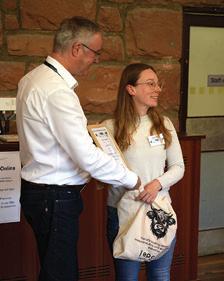
their research outcomes and held discussions with attendees during the lightning talk sessions and the poster session. We would like to once again congratulate Laura Bevis from Queen Mary University of London, our well-deserved Best Poster Winner of the ARCHER2 Celebration of Science 2025!
Keynote & Panel. Professor Mark Parsons, Director of EPCC, presented the keynote on Day 2, in which he reviewed the current state of supercomputing and looked ahead to the potential next generation of systems in the UK. This was followed by an inspiring panel session focusing on how to ensure key UK software is maintained and developed to meet the needs of the UK research community.
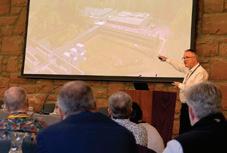
Women in HPC. In this session all attendees were encouraged to actively engage in the group discussion, which covered key equality, diversity and inclusion challenges related to the delivery of HPC services.
ARCHER2 User Forum. This event included a series of brief talks highlighting the updates and plans for the ARCHER2 service, followed by questions and discussion.
We would like to thank everyone who attended the ARCHER2
Celebration of Science 2025. It was fantastic to see so many people from the community joining us and sharing their achievements. We very much look forward to seeing you again next year!

The ARCHER2 Celebration of Science 2026 will take place in Edinburgh from 19–20 March 2026. The current ARCHER2 service has been granted a 12-month extension until November 2026. It will continue to provide a world-class advanced computing resource for UK researchers while we are preparing to host the UK’s next national supercomputing service at the Advanced Computing Facility.
Xu Guo, EPCC x.guo@epcc.ed.ac.uk
ARCHER2 Celebration of Science 2025: www.archer2.ac.uk/community/ events/celebration-ofscience-2025
ARCHER2 website: www.archer2.ac.uk


The Software Sustainability Institute (SSI) is the first organisation in the world dedicated to improving software in research. Its mission is to help people build better and more sustainable software to enable world-class research.
Research Software Camp: Careers and Skills in Research Software

The Research Software Camps (RSCs) aim to improve coding literacy by providing tailored programmes consisting of online workshops, panel discussions, resources, and one-to-one support. The format prioritises entry-level training while also supporting the transition to intermediate skills.
This year’s Research Software Camp, Careers and Skills in Research Software, will run from Monday 10 to Friday 21 November as a multi-session event designed for early-career professionals, recent graduates, and those interested in transitioning into research software roles. Through a combination of hands-on workshops and engaging panel discussions, participants will gain a strong foundation in both technical and professional competencies.
Research Software Camp: Careers and Skills in Research Software page: www.software.ac.uk/Events/ research-software-camp-careersand-skills-research-software

The SSI’s annual Collaborations Workshop (CW) is an immersive three-day unconference focused on collaboration, dynamic discussion, and hands-on problem solving.
Collaborations Workshop 2026 (CW26) will be centred on one powerful theme and clear purpose: Strengthening the research software community.
Research software is central to discovery, innovation, and trust in research. Its future depends on the strength of the people and communities that support it. CW26 will explore how to build a more connected, inclusive, and sustainable ecosystem that empowers practitioners, researchers, developers and advocates.
The event will focus on fostering national and international collaboration, supporting career development across all stages, and embedding equity, diversity, inclusion and accessibility into our collective practices. It will also examine the evolving role of shaping responsible, high-quality research, from AI and data infrastructure to reproducibility, policy and public trust.
Through inspiring talks, interactive workshops, group discussions, and hands-on sessions, CW26 will provide a platform to share knowledge, amplify diverse voices and ensure research software
continues to thrive in an uncertain but opportunity-rich future.
CW26 will take place as a hybrid event from Tuesday 28 April to Thursday 30 April 2026 at ICC Belfast.
Registrations are now open: www.software.ac.uk/workshop/ collaborations-workshop-2026cw26
SSI Fellowship Programme 2026

The Software Sustainability Institute’s Fellowship Programme supports ambassadors for good practice in research software. Since its launch, 244 Fellows have received financial support, networking opportunities, and professional guidance.
The Fellowship aims to promote good computational practice across all research disciplines and to support those leading this important work. Fellows are encouraged to champion these practices within their own domains and fields.
For further details, including information on future application rounds, see: www.software.ac.uk/ programmes/fellowshipprogramme
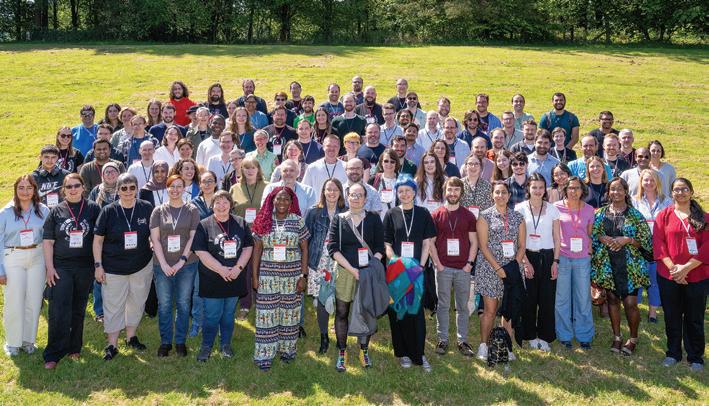
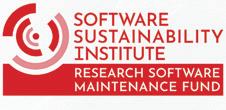
Software is pervasive in modern research, it is used in every discipline and underpins modelling and simulation; data management, analysis and visualisation; and experiment and laboratory control. Yet it can be difficult, even for widely used software, to find resources for maintenance, refactoring and community development because the focus of much research funding is on novelty.
To address this, SSI is running the Research Software Maintenance Fund, supported by the UKRI Digital Research Infrastructure programme. The fund provides £4.8 million to support and sustain key research software, ensuring it remains reliable and accessible. Beyond funding, the initiative seeks to identify effective strategies for reducing technical debt and strengthening engagement across
the research software ecosystem. The first round has closed, but you can find out more about it and when the next round will open at: www.software.ac.uk/programmes/ research-software-maintenancefund

Green DiSC has announced the first Bronze Awards recognising six research and support teams across the UK and Europe for embedding sustainability in computational research. Their work spans diverse fields including cancer research, genomics and data science, proving that sustainable practices can be applied across disciplines. A further 25 organisations are already working towards certification.
Awardees include teams from the Institute of Cancer Research (UK), the University of Groningen (Netherlands), and the University of Pavia (Italy), with initiatives ranging from digital lab support and grassroots sustainability movements to advanced computational biology and genomics.
Green DiSC was created to address the growing environmental impact of digital research, particularly in areas like high-performance computing and AI, which demand significant energy. While laboratory certification schemes exist, this is the first free, open-access framework tailored for computational work. It offers practical steps for researchers and organisations to reduce their carbon footprint, making sustainability accessible and actionable.
Green DiSC is hosted by the SSI in collaboration with the University of Cambridge: www.software.ac.uk/ GreenDiSC
Denis Barclay, EPCC d.barclay@epcc.ed.ac.uk
Every year EPCC’s Outreach team puts together a busy schedule of activities to spread understanding of supercomputing. Here are some of our highlights of 2025.
Edinburgh Science Festival April, Edinburgh.

This was our first big event of 2025. Its theme “Spaceship Earth” imagined we are all astronauts travelling through space on our planet, where all resource usage matters. We refreshed our logic puzzles to incorporate the theme,

The past: a TMC Connection Machine-200 motherboard from 1991. One of the earliest systems designed with AI in mind, although used primarily for computational science simulations. The CM-200 had 16,584 single-bit processors and was famous for its eyecatching design. Its successor, the CM-5, appeared in the movie Jurassic Park!
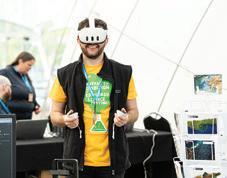
New Scientist Live October, London.
We were part of this three-day programme of over 80 exhibits and events, including talks on five different stages. Our booth featured hands-on activities to help the public learn more about supercomputing, data science and AI.
EPCC outreach at SC25 November, USA.
The future: WSE-3, a Cerebras Wafer-Scale Engine processor. The size of a dinner plate and containing 900,000 processing cores on a single chip, it is the world’s largest AI chip. This summer EPCC became home to the largest Cerebras CS-3 cluster of hands-on activities, workshops, experiments and talks. See our website to read about the experiences of two colleagues who attended for the first time this year. We had a great time yet again and are already looking forward to next year.


SC25 in St Louis, Missouri, will be the location of our last event of 2025. Eleanor Broadway will lead a Birds of a Feather session titled “Building Sustainable HPC Outreach: Reinvent, Reuse, Repurpose”, a practical, hands-on session aimed at overcoming some of the challenges faced by organisations attempting to engage in outreach activities. We will also have our much-loved mini supercomputer Wee Archie.
Darren White, EPCC d.white@epcc.ed.ac.uk
EPCC Outreach website: https://discover.epcc.ed.ac.uk
Women in High Performance Computing (WHPC) is an international organisation connecting women, underrepresented people and their allies to work together to make the HPC community more inclusive. We provide fellowship, education and support while raising awareness and tackling issues around diversity and inclusion.

The supercomputing industry struggles with a lack of diversity, yet research shows that diverse teams are more productive, generate better ideas, solve problems more effectively and produce stronger scientific outcomes. WHPC is proud to be a leading voice advocating for change.
My role
I joined WHPC in 2023 and have dabbled in different roles that help keep our community running smoothly. From conference programmes to social media to fundraising, there’s always something going on - and it’s a lot of work! But my favourite is my current role: Director of Chapters and Affiliates.
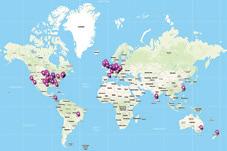
WHPC is truly global, and we have volunteer-led groups all over the world bringing our vision to their local communities. These Chapters and Affiliates are the heart and soul
of what we do! My job is to make sure their leaders have what they need, stay connected to each other and feel supported every step of the way. It’s really rewarding, and I’ve met so many amazing people!
The WHPC Global Committee
This year we launched something really exciting: the WHPC Global Committee. An idea directly inspired by our community!
After reading annual reports and chatting with people at events, it was clear there were so many ways we could better support our community. But we also knew we couldn’t do it all from the centre. We needed a way to bring more voices to the table, encourage collaboration across our global community, ensure local challenges were heard, and get the extra support we need to keep everything running smoothly.

Catch us at SC25!
Don’t miss our 23rd International Workshop in St Louis, Missouri, USA! Come see how we’re building communities and breaking barriers in HPC. Check out all the details on our events page: https://womeninhpc.org/events/ sc-2025-workshop
use this diversity to drive lasting, sustainable and inclusive change in the HPC community.
Eleanor Broadway, EPCC e.broadway@epcc.ed.ac.uk
Join Us
Become a member, follow us on social media, join us at events or connect with your local Chapter/Affiliate. Organisations can also get involved through partnerships, support or sponsorship


We offer Masters’ degrees in High Performance Computing (HPC); HPC with Data Science; and Imaging, Vision and HPC.
EPCC is the UK’s National Supercomputing Centre. We are a major provider of HPC training in Europe, and have an international reputation for excellence in HPC education and research.
Our MSc programmes in High Performance Computing (HPC) and HPC with Data Science have a strong practical focus and provide access to leading edge systems such as ARCHER2 (the UK’s National HPC Service), Cirrus and the EIDF GPU Service which supports data processing and AI workloads.
MSc students have the opportunity to undertake their dissertations in a wide range of HPC areas, including collaborations with industry. Recent project partners range from start-ups to multinationals.
Programmes can be undertaken on-campus (full and part-time) and online (part-time). Optional course choices include modules from the School of Informatics and the wider College of Science and Engineering.
We recently launched a new on-campus MSc programme in Imaging, Vision and High Performance Computing in collaboration with Heriot-Watt University, UK.
We also offer PhDs related to HPC, computational and data science, parallelism, software sustainability and software engineering.

Our graduates are in high demand in both academia and industry in the UK and abroad.
The University of Edinburgh is ranked in the top 30 universities in the world by Times Higher Education World University Rankings 2026, and 34th by QS World University Rankings 2026.
“Overall, my experience with EPCC has been excellent, especially thanks to my supervisor who has been incredibly dedicated. I am grateful to have had the opportunity to know such a great mentor and friend.” Yongkang Qiu, On-campus MSc in HPC with Data Science, 2023-24.
“The computing resources are rock-solid. The community is kind and genuinely helpful, which makes tackling tough parallel computing problems feel a lot less daunting—and a lot more fun.” Xingran Ruan, EPCC PhD student 2021–25. Now EPCC colleague.